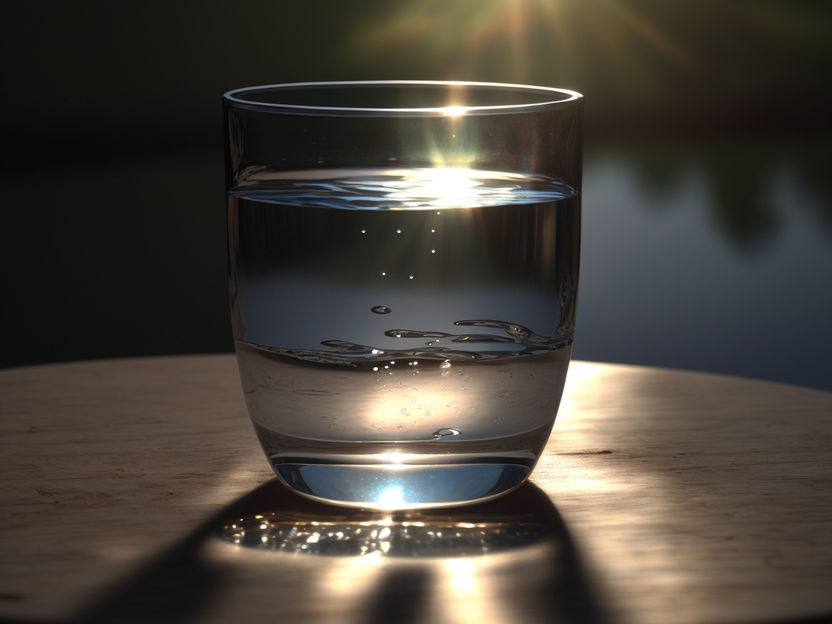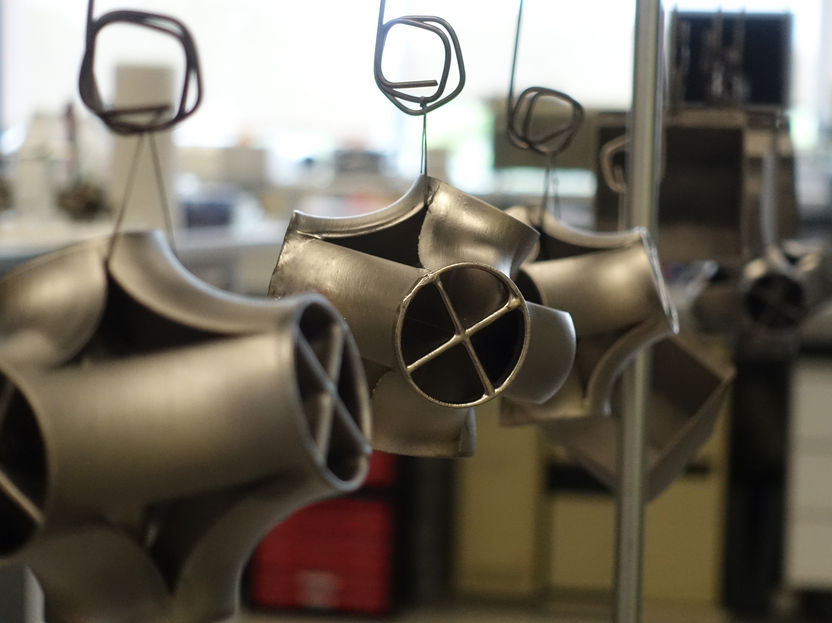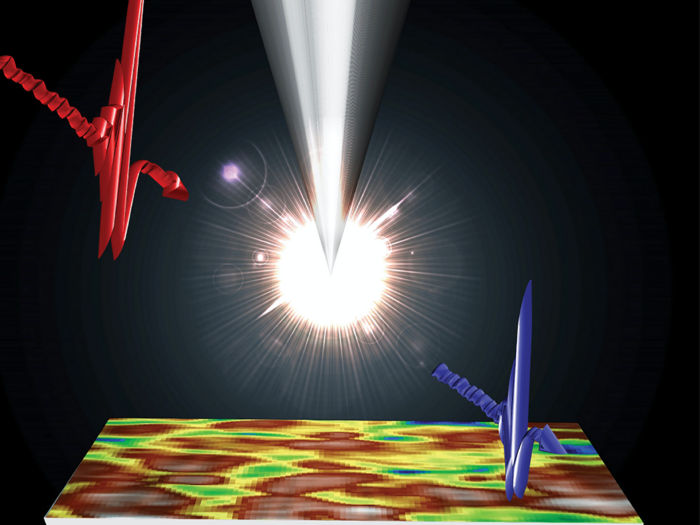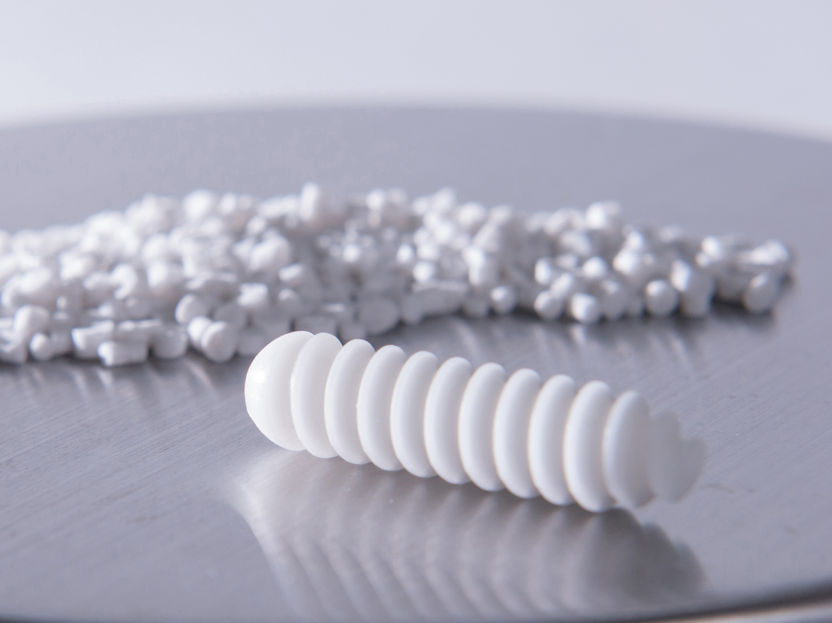Making Drinking Water Bacteria-Free
Efficient disinfection of water with silver sulfide quantum dots in a peptide coat
water contaminated with bacteria is a large threat to global health. A Chinese research team has described a simple new method of disinfection in the journal Angewandte Chemie. It is based on tiny biocompatible assemblies of atoms, known as quantum dots, made of silver sulfide with caps made of a silver-binding peptide. When irradiated with near-infrared light, they kill bacteria in water with high efficiency through synergistic effects.

Symbolic image
Computer-generated image
Particularly in developing nations and remote regions of the world, it can be very difficult to access clean drinking water. Pathogenic bacteria, such as E. coli, enterococci, salmonella, or cholera pathogens, can cause serious infections. A single swallow can sometimes have fatal consequences. Traditional disinfection methods widely implemented in recent decades, such as UV light, chlorination, and ozone, have disadvantages, including high costs, poor efficiency, poor biocompatibility, and carcinogenic by-products. An alternative is needed.
A team led by Xushen Qiu, Wei Wei, and Jing Zhao has now introduced a new method that is based on quantum dots made of silver sulfide (Ag2S). Quantum dots are nanoscopic structures made of about one-to-ten thousand atoms that are “confined” in space. Their quantum-mechanical properties correspond more to those of molecules than macroscopic solids, which can lead to interesting opto-electronic effects.
Silver sulfide quantum dots are already used in photodynamic and photothermic therapy, including for the treatment of certain tumors and skin diseases. They can be used as contrast agents and as fluorescence thermometers. So far, they have not been used much for disinfecting water, partly because previous methods for preparing them have been complicated and expensive. The team from Nanjing University and the Nanchuang (Jiangsu) Institute of Chemistry and Health has now developed a simple, inexpensive production method, in which the quantum dots are enclosed by caps made from a specially developed biomimetic silver-binding peptide (AgBP2).
When irradiated with near-infrared (NIR) light, the new AgBP2-Ag2S quantum dots effectively kill bacteria in water. They are chemically stable, photostable, and biocompatible. Their strong activity is due to a synergistic combination of two effects. First, irradiation causes them to produce highly reactive oxygen species, and second, they cause strong local heating. Neither of the two effects alone leads to success, but their synergistic combination effectively destroys bacterial cell membranes. They are able to kill over 99% of E. coli bacteria within 25 minutes of NIR irradiation—a highly promising strategy for antibacterial disinfection of water.
Original publication
Other news from the department science

Get the chemical industry in your inbox
By submitting this form you agree that LUMITOS AG will send you the newsletter(s) selected above by email. Your data will not be passed on to third parties. Your data will be stored and processed in accordance with our data protection regulations. LUMITOS may contact you by email for the purpose of advertising or market and opinion surveys. You can revoke your consent at any time without giving reasons to LUMITOS AG, Ernst-Augustin-Str. 2, 12489 Berlin, Germany or by e-mail at revoke@lumitos.com with effect for the future. In addition, each email contains a link to unsubscribe from the corresponding newsletter.
Most read news
More news from our other portals
Last viewed contents
1,3-dipole
Leiner_Health_Products

Covestro taps into China’s growing start-up scene - Comprehensive analysis of Chinese founders’ landscape
PolyOne, Dow Corning Announce Distributor Agreement For Silicone Elastomers in Healthcare Applications

Cloretil S.A.I.C.I.F. - San Isidro, Buenos Aires, Argentina
Oil_Blue_35

Lacquering before polishing - Technical Coatings for Additive Manufacturing

New discoveries made about a promising solar cell material, thanks to new microscope

Plastic snowfall in the Alps - Nanoplastic in the environment: New chemical method for counting plastic particles developed




























































